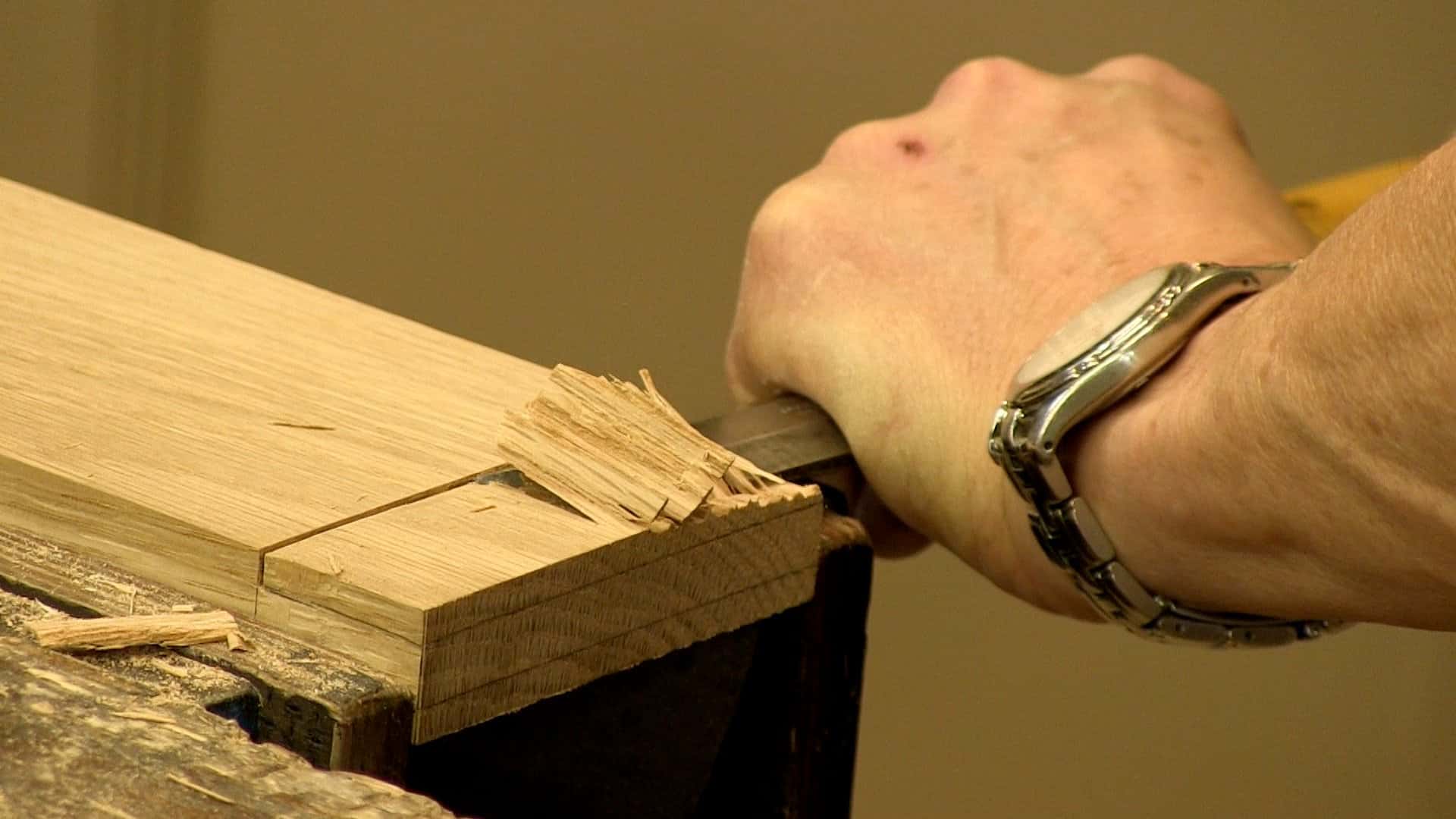Sofa Table: Episode 2
Posted 15 April 2014
This is an episode in a paid series. Want to watch it? You just need to sign up as a paid member, and you can enjoy this video and many other videos we think you will love.
What are the different ways of cutting a tenon? Find out in this episode, as Paul shows us a few options as well as showing how to cut the haunches.


Thanks Paul. I’m enjoying this project a lot, because I really need an entrance table.
Howdy Paul!
…as said in Texas. You make it look easy! Even after attending the “foundation” class you led at Homestead Heritage in 2004 and two others there after (The Brazos Rocker, and your son’s dining room table as a private class.), I can not work as fast or precise as do you. While I will remain a “novice” to the end of my days (I am 68), I assure you I have had GREAT FUN attempting to improve my skills while building furniture! Besides, as a five year long retiree, the hobby keeps me physically and mentally engaged!
This method of instruction is singularly great! The videos allow one to: (1) View what you are doing up close; (2) Review a step not understood; (3) When I have time and anxious to learn; and (4) At a reasonable price! What more could a student ask for?
THANK YOU!
Steve
Paul,
For the final fitting, would you ever use a shoulder plane over the router.
Yes, I might, but using the knifewall method guarantees shoulder lines are dead square provided you work dead to the line. Therefore, in general, you would not need a shoulder plane correction. Remember that shoulder planes came into their own on the wide shoulders of large office and entryway doors to shops and stores. When extruded aluminium doors replaced them we stopped using shoulder planes because such wide shoulder lines were rare. The don’t work to well on rails narrower than say 3-4″ and as said, you don;t really need them. That said, I do like them for the face or cheeks of tenons for trimming off a thou or two.
Very good video. I can’t wait to get started on mine. Maybe this week end! 🙂
Liking this project, looks like we’ll learn joints, skills and techniques that can be reused on a host of different styles of tables.
Just wondering why a sloped ten ono is being used in this piece as opposed to a normal hunched tendon. Is there a purpose or is it just an aesthetic addition?
Just an added extra for discipline really. Though the variety would be good for everyone and also this was a common method too.
Regards the gap in the shoulder (on the inside face) – you say don’t worry about it for now. I’m curious how it even happened. You are always knifing the lines with the square, on all four sides. So all four shoulders should fit perfectly, yet the back one looked to be a good 1/32″ off.
What happened?
Sometimes something seems off until you add all of the other components and it aligns perfectly.
In America I think they would refer to this as a Console Table.
Very interesting exposition of various methods of making tenons! But when Paul ends episode 2 by saying “and that’s how I would cut my tenons” I wonder which method he would instinctively “reach for”.
I usually split-cut if the grain is straight, pare cut if its a little off course and saw if it has the remnant or surrounding wood of a knot.
… I remember when Tage Frid weighed in on the subject in back to back articles with Ian Kirby in the first year of Fine Wordworking. Frid brushed aside the “English method” as being too demanding on beginners and advocated quick and simple bowsawing in its stead.
The best method is the one you’ll use. I train people in an entirely different industry and my observation is this. No matter the method, everyone prefers the one they learned first, providing they practiced it and became proficient. Two people in different companies producing the same work will each tout their method as the only or best way to do it. But in the end, if the results are the same, does it really matter?
Thank you so much for all the great pointers to better hand woodworking.
I very much liked the variety of chisel methods with the final cut taken with the hand router.
Great show.
I absolutely love these videos. Just perfect. What is the sloped haunch for?
I got all my mortises chopped out today… Maybe this week I can start on the tenons. This is going to be fun!